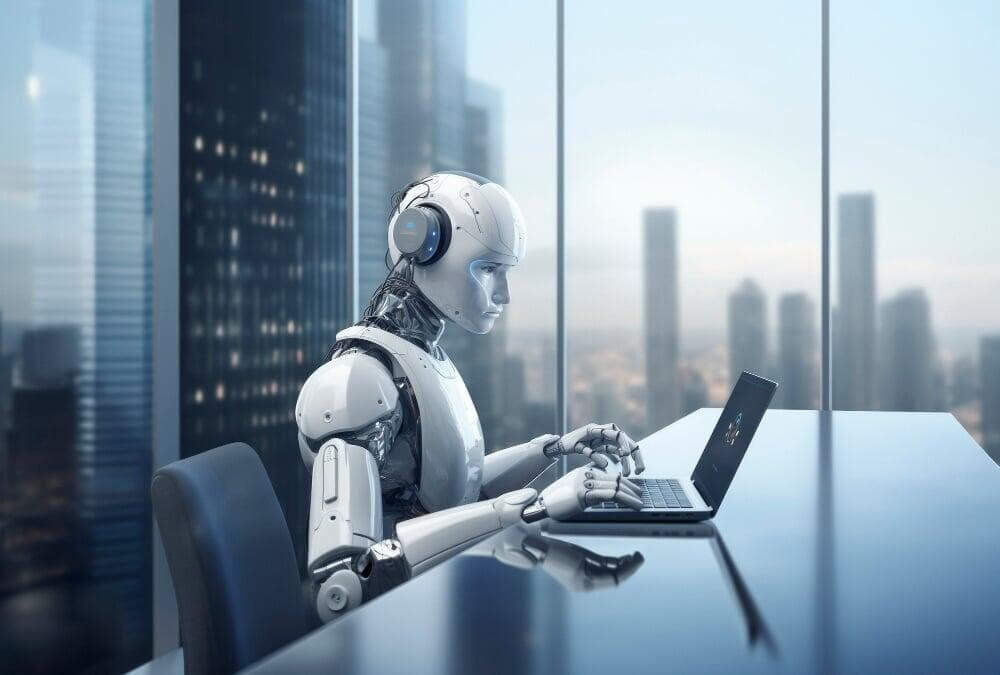The Future Is Now: How Automation and Robotics Are Revolutionizing Our World
The Future Is Now: How Automation and Robotics Are Revolutionizing Our World

- From the factory floor to our living rooms, the impact of automation and robotics is undeniable.
- Robotics and automation in healthcare encompasses various types tailored to specific applications within the sector, such as surgical, service, and exoskeleton robots, and different software solutions.
- Automation in manufacturing encompasses a broad spectrum of applications to streamline repetitive or hazardous tasks, thereby allowing human labor to concentrate on more intricate and skilled activities.
- Home automation has become a reality, offering convenience, efficiency, and even companionship through advanced technologies.
- Traditional agricultural companies are increasingly integrating farm automation into their practices, reflecting a growing trend toward modernization in the agricultural sector, increasing efficiency and sustainability.
- To address severe labor shortages in the logistics field, a new generation of AI-enabled robots, sensor technology, and AI is being deployed.
In 2024 automation and robotics are no longer a futuristic concept but a tangible force reshaping our world. From the factory floor to our living rooms, its impact is undeniable. The goal isn’t just replacing workers, but bringing greater precision, innovation, and flexibility across various sectors.
HEALTHCARE
The evolving demographics and challenges facing healthcare systems highlight the need for innovative and efficient solutions. Robotics in healthcare encompasses various types tailored to specific applications within the sector. Here are some examples of them:
- Surgical robots: Assist surgeons during operations, like the Da Vinci robot.
- Autonomous mobile robots (AMRs): Transport supplies, patients, or waste within hospitals.
- Service robots: Prepare patient rooms, track supplies, and restock cabinets.
- Nursing robots: Monitor patient vitals during transport.
- Exoskeleton robots: Provide support and aid rehabilitation for patients with disabilities.
Additionally, medical automation also includes software solutions that analyze vast amounts of medical data to aid diagnosis and handle repetitive tasks, freeing up healthcare providers to focus on patients.
MANUFACTURING
Manufacturing automation entails the utilization of programmable devices, systems, and tools like artificial intelligence, robots, and computer-controlled machines. Its primary purpose is to streamline repetitive or hazardous tasks, allowing human labor to concentrate on more intricate and skilled activities.
The new World Robotics report of the International Federation of Robotics recorded 553,052 industrial robot installations in factories around the world – a growth rate of 5% in 2022, year-on-year.
Here are some key examples:
- Robotics: Industrial robots, programmed to perform repetitive tasks with precision and speed, are employed in tasks like stacking, painting, welding, polishing, labeling, and assembly. Companies like Tesla and Amazon utilize robots extensively for production and inventory management.
- 3D Printing: This technology allows the printing of production parts based on computer designs, eliminating the need for traditional manufacturing processes. Companies such as Volkswagen, L’Oreal, and Aldi integrate 3D printing into their manufacturing processes.
- CNC Machining: Computer Numerical Control (CNC) machines use computer software to direct complex automated processes, offering high precision and rapid production capabilities. Industries like aerospace benefit from CNC machining.
HOME AND APPLIANCE
The integration of automation and robotics has revolutionized the concept of home living, bringing futuristic capabilities to our daily lives. Home automation has become a reality, offering convenience, efficiency, and even companionship through advanced technologies.
Here are some examples of home automation and personal assistance:
- Automated Lights: Smart bulbs such as the Philips Hue Starter Kit allow for customizable lighting settings controlled through a smartphone app, enhancing ambiance and energy efficiency.
- Home Security: The Ring Video Doorbell offers real-time monitoring of door activity, integration with virtual assistants like Amazon Alexa, and remote access via smartphones, enhancing home security and convenience.
- Robot Vacuum Cleaners: Devices like the iRobot Roomba automate floor cleaning tasks, freeing up time for homeowners and maintaining cleanliness consistently.
- Personal Assistant Robots: Assistants such as Aido, Zenbo, or Kuri are capable of assisting with various tasks, including entertainment, controlling home appliances, household chores, home security, and so on.
AGRICULTURE AND FARMING
Modern farms are embracing high-tech solutions to address challenges like labor shortages and rising food demands.
The UN Food and Agriculture Organization predicts that we need to boost worldwide food production by 70 percent over the next several decades to feed the anticipated population of 2050.
LOGISTICS AND WAREHOUSING
The global logistics industry is essential to international trade, accounting for approximately 10% of the world’s GDP. However, severe labor shortages pose a significant challenge to future growth.
To address these shortages, a new generation of AI-enabled robots is being deployed. Unlike traditional robots, AI-enabled robots can handle the unpredictable world of logistics, with their constantly changing products and orders.
Furthermore, sensor technology and AI are transforming logistics through intelligent production systems. Here are some examples of these technologies:
- Port automation: Sensors and robots, like autonomous mobile robots (AMRs), are boosting productivity and safety in ports and terminals. AMRs prevent accidents by guiding traffic and avoiding collisions.
- Warehouse efficiency: Robotic systems like pallet movers and AMRs help warehouses handle increasing demand. Automated Guided Vehicles (AGVs) and drones work alongside AMRs to automate tasks like inventory transport.
- Predictive maintenance: Combining sensor data (IoT) with robotics allows for predictive maintenance, optimizing robot performance and minimizing downtime. Analyzing this data is key to achieving an autonomous supply chain and maximizing the value of robotics investments.